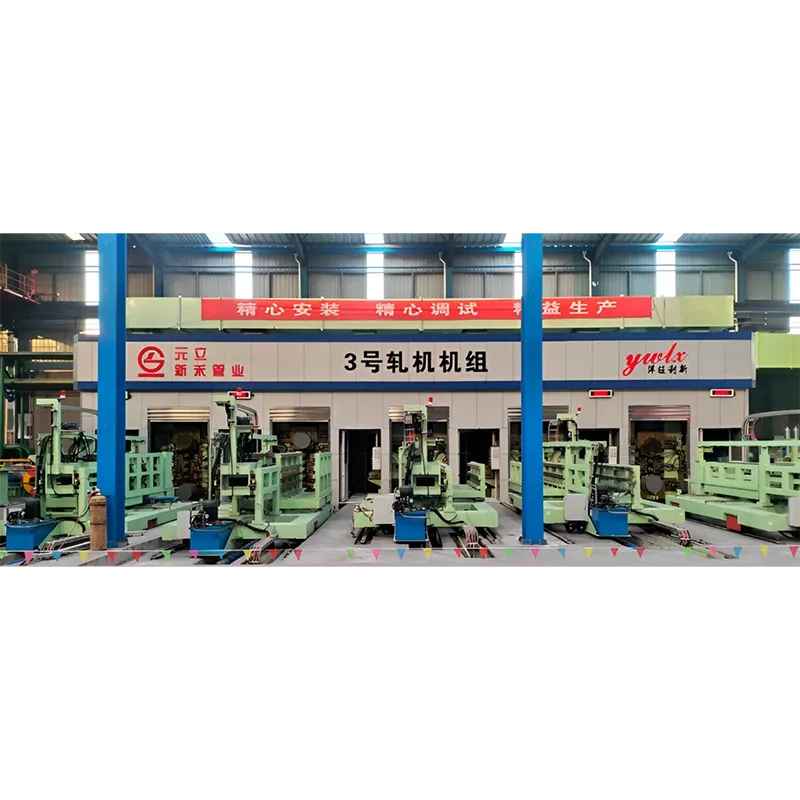
Application of Temper Mill in Annealing Line
The temper mill is a vital component in the annealing line, playing a key role in enhancing the mechanical properties and surface quality of steel strips. This article explores the application of the temper mill in the annealing line, focusing on the temper mill process, its operation, and its benefits for temper mill steel.

Role of the Temper Mill in Annealing Line
The temper mill is typically integrated into the annealing line to refine the properties of steel strips after the annealing process. The primary purpose of the temper mill is to improve the steel's surface finish, flatness, and mechanical properties through temper rolling. This process ensures the steel meets the required specifications for strength, formability, and surface quality, making it suitable for various industrial applications.
Temper Mill Process
The temper mill process involves lightly cold-rolling the steel strip with minimal reduction, typically ranging from 0.5% to 3%. This process, also known as temper rolling, eliminates yield point elongation, refines the surface texture, and enhances the steel's formability. In the annealing line, the temper mill is positioned after the annealing furnace to ensure the steel strip undergoes the necessary surface treatment without compromising its mechanical properties.
Types of Temper Mills
The temper rolling mill can vary in configuration depending on the specific requirements of the annealing line. Common types include:
2-High Temper Mill: A simple configuration suitable for standard applications.
4-High Temper Mill: Offers better control over the rolling process, making it ideal for high-precision applications.
6-High Temper Mill: Provides advanced control and is used for producing steel with superior surface quality and uniformity.
Temper Mill Operation
The temper mill operation involves several critical steps:
Entry Section: The steel strip is fed into the temper rolling mill after annealing.
Rolling Section: The strip undergoes light cold-rolling to achieve the desired surface finish and mechanical properties.
Exit Section: The processed strip is coiled and prepared for further processing or shipment.
The temper rolling process is carefully controlled to ensure consistent results, with parameters such as rolling force, tension, and speed being optimized for each specific application.
Benefits of Temper Rolling in Annealing Line
The temper rolling process offers several advantages in the annealing line:
Improved Surface Finish: The process creates a smooth and uniform surface, which is essential for applications requiring high aesthetic standards.
Enhanced Mechanical Properties: It refines the steel's grain structure, improving its strength and formability.
Reduced Defects: Temper rolling minimizes the risk of stretcher strains and other surface defects, ensuring the steel meets stringent quality standards.
The temper mill is an indispensable component of the annealing line, ensuring the production of high-quality steel strips. Through the temper mill process, including temper rolling, the steel achieves the desired surface finish, flatness, and mechanical properties. Whether using a 2-high, 4-high, or 6-high temper rolling mill, the temper mill operation plays a critical role in delivering temper mill steel that meets the demands of various industrial applications. This makes the temper mill a key contributor to the efficiency and quality of the annealing line.
-
Indian Clients Visit YWLX to Inspect Skin-pass MillNewsJun.22,2025
-
Typical Products from Reversing Cold Rolling ProcessNewsMay.26,2025
-
Surface Finish Improvement through Skin Pass RollingNewsMay.26,2025
-
Integration of AGC Systems in Modern Cold Rolling MillsNewsMay.26,2025
-
Cold Rolling in the Context of High-Strength Steel DemandNewsMay.26,2025
-
AGC in Hot Rolling Mills: Challenges and SolutionsNewsMay.26,2025
-
Why Reversing Cold Rolling Mills Are Ideal for Specialty MetalsNewsMay.13,2025










